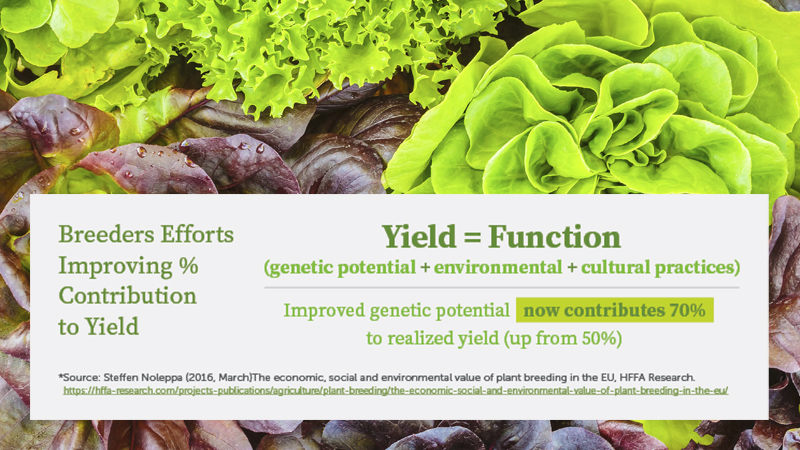Get The Airflow Right For Your Greenhouse Plantings

Airflow in the greenhouse is essential for creating a productive and healthy environment for your plants. Airflow is responsible for moving air in and out of the production space, for exchanging gases and heat that affect plant growth and quality, and for delivering the air to where we want it.
- How much air should you deliver to the room?
- How fast should you blow air across the plant?
- Does the air delivery method matter?
Here are a few things you need to know about airflow in the greenhouse.
Airflow vs. Air Velocity vs. Air Change Rates
First, let’s talk terminology. The word “airflow” is generally used to describe the movement of air from one location to another. In engineering terms, airflow is the volume of air that is being moved from one location to another. When you see airflow described in units of “CFM” (cubic feet per minute) or “m3/s” (cubic meters per second) that’s the cue we’re talking about the volume of air we’re delivering from an HVAC unit, through a duct, or by a fan.
Air velocity is the speed at which air is moved across a distance. Air velocity is described in “meters per second” (m/s), “feet per minute” (fpm), or “miles per hour” (mph). Note: if you’re measuring air speed across your plants in units of mph, you’re probably blowing too hard!
Air change rate is the number of times the total volume of air inside a room is removed and replaced with new air over a period of time. There are specific two terms to describe air change rates. Air exchange rate (AER) is the number of times the air inside a room is exchanged with outside air and is another way to describe ventilation. You will most often hear this term associated with greenhouses. The air turnover rate (ATR) is the number of times the air inside a room is processed by the air conditioning system.
Why is Air Movement Important?
Moving air to and within greenhouses and indoor farms is important for several reasons.
- Air movement facilitates gas exchange. The air delivers carbon dioxide (CO2) to plants so they can photosynthesize. The air also removes the waste product of photosynthesis, namely oxygen (O2). The air also removes water vapor generated by plant evapotranspiration.
- Air movement helps with heat exchange. When there’s a lot of light radiation, the air can help dissipate heat and cool the plant down. When it’s dark or low-radiant energy lights are used, the air can deliver heat to the plants to maintain desired leaf temperatures.
- Air movement helps build strong plants. When gas exchange and heat exchange are good, the plant can freely photosynthesize and transpire. Air movement can also help the plant build thicker cell walls and deter flying insects from landing on plants.
What Air Speed do Plants Like?
If you can deliver an air speed between 0.35 and 1.0 m/s (80-200 fpm), you are right on target! Horticultural researchers around the world have demonstrated that this is the ideal range. Plants exposed to air speeds lower than 0.35 m/s and greater than 1.0 m/s tend to have higher incidence of leaf tip burn and blossom end rot caused, respectively, by too low or too high evapotranspiration rates. Air speeds near the top of the range result in more vegetative growth, as plants build their cell walls to resist air pushing on them. You may want to facilitate this type of growth if you are trying to grow crunchy lettuce or thick stalks, branches, and stems to support fruit and flower production during the reproductive stage. When your plants do start to flower and fruit, finding a velocity in the middle of the range will promote good evapotranspiration and nutrient delivery to the parts that matter most.
For more, continue reading at CEAgWorld.om.










